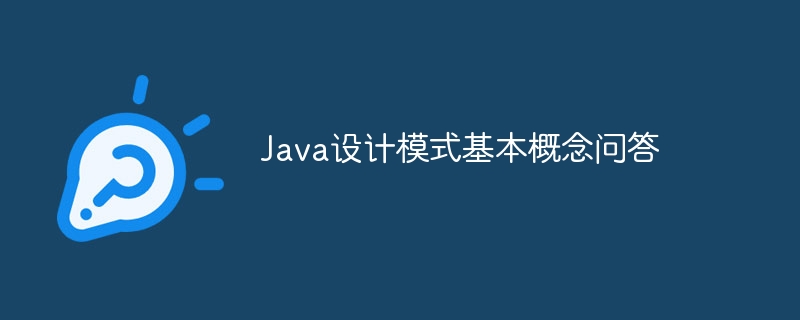
Design patterns are reusable best practice solutions in software development, providing code reuse and ways to solve common problems. Common design patterns include builder, adapter, singleton, observer, and factory method patterns. The benefits of design patterns include improved reusability, flexibility, low coupling, and code quality. The adapter mode allows incompatible classes or interfaces to interact. For example, the existing system ExistingClient can interact with the external library ExternalLibrary through the adapter ExternalLibraryAdapter to implement calls to external library methods.

Questions and Answers on Basic Concepts of Java Design Patterns
Q1: What are design patterns?
A: Design patterns are reusable solutions used in software development to solve common programming problems and provide best practices and code reuse.
Q2: List several common design patterns.
A: Builder, adapter, singleton, observer, factory method.
Q3: What are the benefits of design patterns?
A: Reusability, flexibility, low coupling, high cohesion, and improved code quality.
Practical case: Adapter pattern
The adapter pattern allows incompatible classes or interfaces to collaborate with each other. For example, you want to use an external library, but its interface is incompatible with your system:
// 现有系统
class ExistingClient {
void doSomething(ExistingSystem system) {
// 使用ExistingSystem
}
}
// 外部库
class ExternalLibrary {
void doSomethingElse(ExternalSystem system) {
// 使用ExternalSystem
}
}
// 适配器
class ExternalLibraryAdapter implements ExistingSystem {
private ExternalLibrary library;
ExternalLibraryAdapter(ExternalLibrary library) {
this.library = library;
}
@Override
public void doSomething() {
library.doSomethingElse();
}
} Now, ExistingClient can be used with ExternalLibraryAdapter and ExternalLibrary Interaction:
ExistingClient client = new ExistingClient(); client.doSomething(new ExternalLibraryAdapter(new ExternalLibrary()));
The above is the detailed content of Questions and Answers on Basic Concepts of Java Design Patterns. For more information, please follow other related articles on the PHP Chinese website!